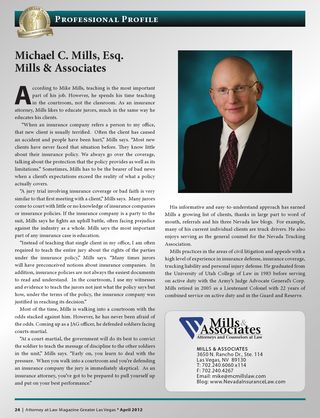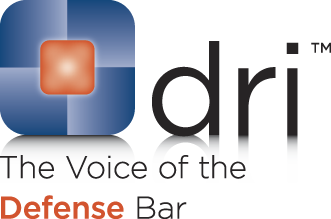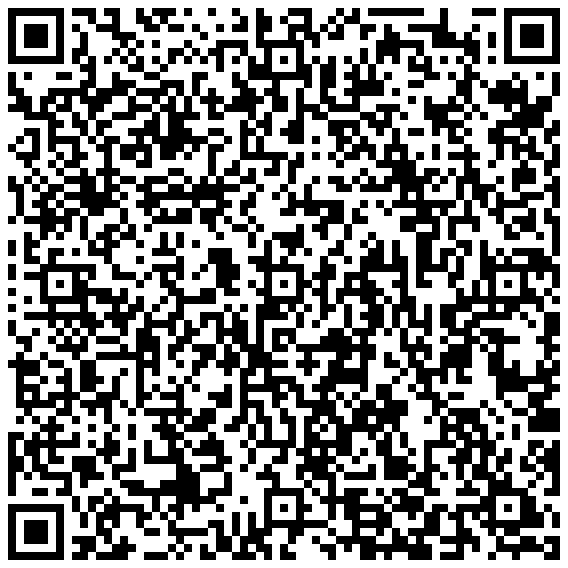How many times a week do busy insurance adjusters receive demands to settle a claim for the amount of the insured’s policy limits? It doesn’t matter that the damage to the Plaintiff’s car is valued under $500.00 and the chiropractic treatment is less than $1,500. The Plaintiffs are still asking for the entire per person limit. And that is not all! The Plaintiffs want the money on exceptionally short notice, providing the adjuster little or no supporting information. This Nevada Insurance Law Blog post explains why the Plaintiffs’ attorneys submit such unreasonable demands. We will also explore a strategy on how to address these policy limits demands, no matter how outrageous they may seem.
I. WHAT MOTIVATES THE PLAINTIFF’S ATTORNEY TO SEND YOU THAT POLICY LIMIT DEMAND LETTER?
THEY ARE LOOKING FOR DAMAGES IN EXCESS OF THE POLICY LIMITS!
Plaintiffs’ attorneys are constantly searching for ways to maximize a recovery for their clients. Plaintiff’s attorneys do not want to collect damages from the actual tortfeasor. That can be difficult and time consuming. Instead, they like to collect directly from the insurance companies.
All adjusters know that insurance policies are written with limitations. Under the policy, the amount of the premium will dictate how much the carrier will have to pay out.
Plaintiffs’ attorneys know of these limitations and are always looking for ways to get around them. Plaintiffs’ attorneys and insurance companies both know that if the carrier acts in bad faith, it can be called upon to pay more than the policy limit. Bad faith claims are a concern for every insurance carrier. Not only do they damage the carrier’s public image, they also place an insurance carrier at risk to pay damages in excess of the policy limit. Along with that, there is also the risk that the carrier will have to pay a claim for punitive damages.
Plaintiffs’ attorneys have devised a number of strategies that they believe will automatically put the carrier in bad faith and thereby “open the policy”. One very common threat made by Plaintiffs’ attorneys is that the policy is immediately opened if the defendant’s carrier fails to accept a settlement demand made at or below the policy limit. Plaintiffs’ attorneys claim that they are entitled to an “extra-contractual” recovery if the carrier doesn’t pay them the entire policy limit within the time they have prescribed.
Let’s examine the background behind this common threat and consider the misunderstandings held by many regarding a failure to satisfy a policy limits demand. Finally, although the threats can never be eliminated, we will discuss strategies that the carrier may adopt to mitigate the possibility that policy will ever be opened due to by bad faith.
II. DO NOT LET FEAR OF A POLICY LIMIT DEMAND LETTER CAUSE YOU TO FREEZE UP.
INSTEAD, IMPLEMENT YOUR PLAN!
When the policy demand letter arrives, it may or may not include a threat of bad faith. Just know that the policy limit demand is the foundation for a possible bad faith claim in the future. Therefore, you have to take the letter seriously. Do not ignore it. But don’t let the demand letter cause you to freeze up either.
At the moment when a demand letter is sent and received, any threat of bad faith is just that, a threat. The impact of any alleged bad faith is a long way off. When a plaintiff’s attorney claims that the carrier’s bad faith “opened” the policy, the attorney is arguing that the carrier has breached the duty it owes to its insured.
In fact, the carrier owes a duty to its insured to act reasonably in its negotiations with the claimant as it decides whether it will accept a demand. If the insurance carrier fails to reasonably consider the interests of the insured, it can be argued that the carrier has acted in bad faith.
A circumstance that regularly presents itself for the carrier’s consideration is whether the plaintiff’s demand is meritorious and whether payment of the insured’s minimum policy limit would in fact settle the case. If the carrier unreasonably rejects or fails to respond to the plaintiff’s demand, the insured may have grounds to argue later that the carrier has committed bad faith.
However, bad faith against the carrier is not mature until the insured sustains some damage. The insured will not be considered damaged unless and until the plaintiff has obtained a judgment against the insured. In other words, the carrier does not automatically commit bad faith by rejecting the policy limit demand or by making a counter offer.
Thus, keep in mind, it is not the demand letter that puts the company in bad faith. Instead, it is how the company reacts (or fails to react) that can cause a bad faith claim to arise. Therefore, having a response plan in place and executing that response plan will reduce the possible exposure to a bad faith suit.
III. THE PLAN YOU NEED TO FOLLOW TO AVOID POLICY LIMIT DEMAND PITFALLS
1. Send a written response to every time limit demand in advance of its deadline.
We recommend every response to a time limit policy limit demand be made in writing. If there is ever a question of timeliness, the writing is evidence of the date of your response to the demand. Furthermore, the written response documents how the carrier intends to respond to the demand. If the response is written carefully, there will be no question about the carrier’s intentions toward Plaintiff’s demand.
2. In the carrier’s written response, describe several of the steps that the company has taken to complete its investigation of the claim.
By describing in writing some of the steps the company has taken on the claim, it will demonstrate that the carrier is attending to its duty to investigate. If the claim were to go on to an extra contractual phase, the letter will be evidence that the carrier did not ignore the file.
3. Ask the Plaintiff’s attorneys to send you everything that they have in their files that will support their demand
This item may be self evident but it seems to be an alarming trend that Plaintiffs’ attorneys are sending demand letter with little or nothing attached. In your written response, always point out the fact that the demand included no or few supporting documents. Tell the Plaintiff’s attorney that you cannot evaluate the claim without access to any evidence of injury or bills. It is not unreasonable to ask the Plaintiff’s attorney to send you copies of the documents (i.e. medical bills and records) that would support their client’s claim for damages.
If the Plaintiffs attorney sends authorizations and expects the carrier to send them to the providers and those authorizations do not comply with the HIPAA law, respond in writing that the authorizations will do the company no good because they will not be honored by the Plaintiff’s medical providers.
Always remind the Plaintiffs attorney in writing that if you cannot evaluate the claim without the medical records and that if you have to go out and get them that that is going to take additional time.
4. Always detail additional steps that must be taken to complete the evaluation of the claim.
This is a critical step in the response process. Sometimes counsel will present a time limit demand with an exceptionally short response time fuse. If the response time is so short (i.e., one to two days) that no legitimate response can be formulated, the written response should say that.
In particular, the letter should describe steps that still have not been completed. Perhaps medical records need to be collected. Maybe witnesses need to be interviewed. It is possible that photos are needed or measurements taken or experts consulted. The response should also state all of the additional steps that need to be taken to complete the carrier’s investigation. In addition, the letter should say that further investigation may be needed based upon completion of the listed steps. Don’t forget to say that the additional investigation will require additional time to be completed and the company will need time to consider the findings of the investigation.
5. If evidence/information in the claimant’s control is now unavailable for review, mention that fact.
In many investigations, the evidence and information that had been available at one time is no longer available. For example, a car that once may have been available for thorough evaluation by the company’s engineer may have been repaired and therefore, no longer be available for such an evaluation. Sometimes photographs taken by the Plaintiff are lost or cannot be developed.
There are times when parts have been lost, statements have been bungled, or other situations where critical information has been either intentionally or inadvertently destroyed by the Plaintiff or his counsel. If there is evidence in the case that you would have liked to have seen but that is no longer available, it is always good to mention the loss of that information and document how it is no longer available and how the lack of the information is going to hinder the company’s further investigation of the case.
6. Recite any authority that grants or insinuates that the carrier may have additional time to respond.
In many states, fair claims practice regulations obligate the carrier to respond to any particular claim within a certain time frame. In first party cases, Nevada identifies 30 days as being the appropriate period in which to respond. Nevada Administrative Code 686A.675(3) specifically states that in regard to insurance claims:
If the insurer needs more time to determine whether a claim of a first-party claimant should be accepted or denied, it must so notify the claimant within 30 working days after receipt of the proof of loss giving reasons that more time is needed. If the investigation remains incomplete, the insurer shall, 30 days after the date of the initial notification and every 30 days thereafter, send to the claimant a letter setting forth the reasons that additional time is needed for investigation.
In virtually any letter, it would be appropriate to cite this section of the regulations and would provide for and could argue that the Department of Insurance has indicated that an appropriate response time is 30 days and not the 2 or 3 days that the Plaintiff’s attorney has given you.
IV. CONCLUSION
By following this plan an insurance carrier can discourage claimants from attempting to take their claims to an extra contractual level. Although this plan may not always prevent all extra-contractual cases, it has worked well for many of our clients in southern Nevada.
Even if the most persistent claimants are not discouraged by your response letter, the submission of the letter will become good evidence should the case later find itself in extra contractual litigation.
If you have any questions about other defense strategies to respond to Time Limit Demand Letters, please feel free to contact Mr. Mills by email or phone (702) 240-6060.
 Follow
Follow Email
Email


